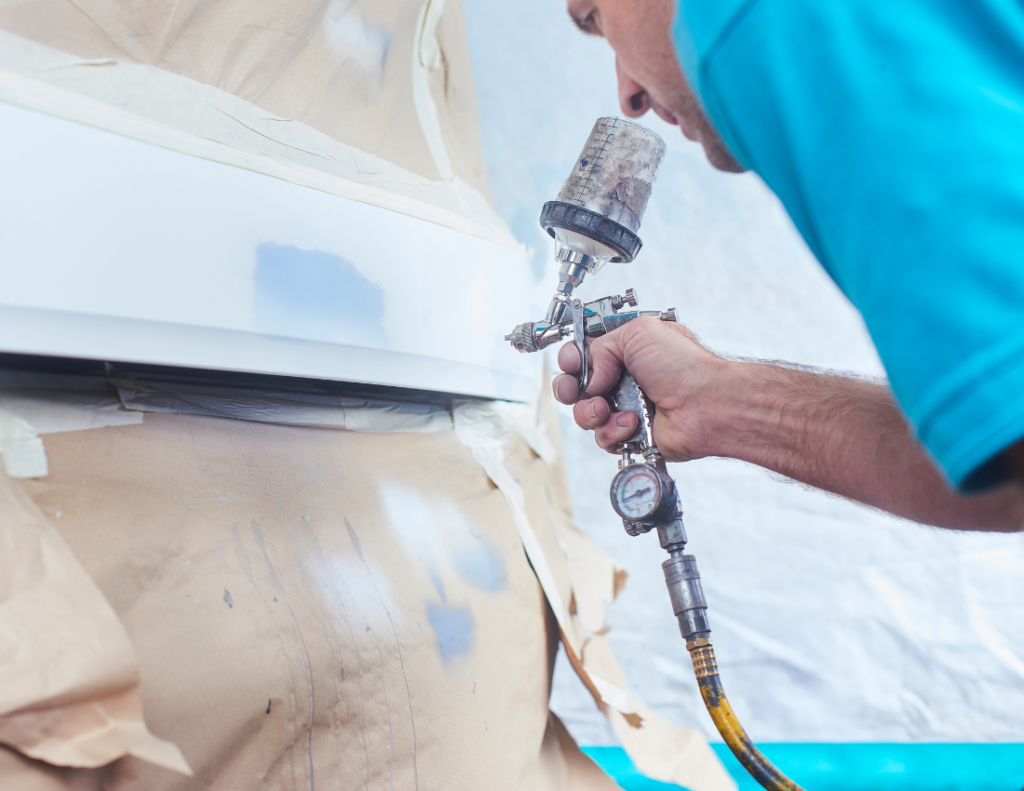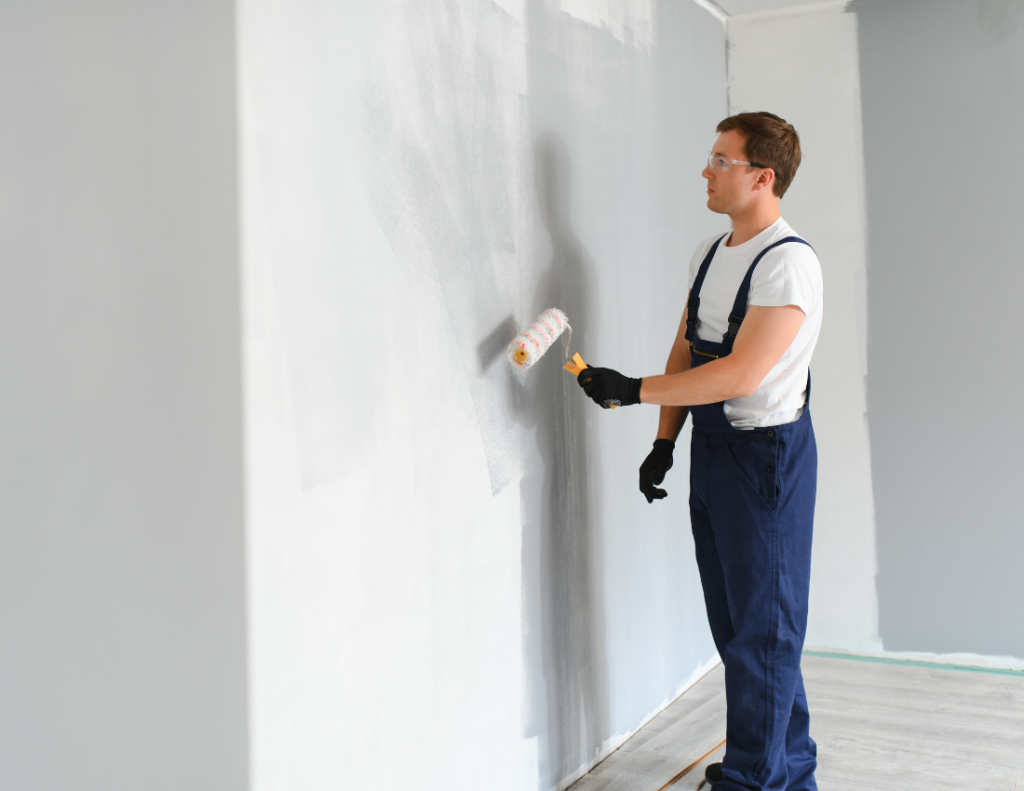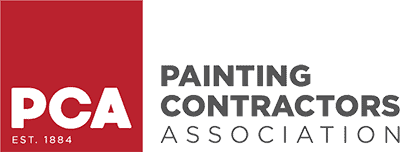A fresh coat of paint can completely change the look and feel of your home, but before you start, there’s one big decision—roller painting vs spray painting.
Both methods have their strengths, and choosing the right one depends on the surface, project size, and your level of experience. Some homeowners swear by paint sprayers for their speed and factory-like finish, while others prefer paint rollers for better control and less prep work.
So, which method is best for your interior walls, ceilings, furniture, or exterior surfaces?
In this guide, we’ll break down roller painting vs spray painting to help you decide. Plus, we’ll share insights from professional house painters in Jenks, OK, who use both techniques in house painting projects.
Key Takeaways:
- Roller painting vs spray painting depends on the project size, surface type, and level of detail needed.
- Spray painting is best for large surfaces, textured walls, and detailed trim, offering a smooth, even finish but requiring extensive masking and using more paint.
- Roller painting provides better control, less mess, and lower paint waste, making it ideal for interior walls, ceilings, and small projects.
- Sprayers work well for exterior projects, cabinetry, and furniture, while rollers are more practical for occupied spaces and touch-ups.
- Beginners will find rollers easier to use, while sprayers require skill and practice to avoid drips, streaks, and uneven coats.
Spray Painting: The Fastest Way to Get a Smooth, Even Finish

Spray painting is a powerful technique that applies paint in a fine mist, creating an even coat across a surface. It’s a favorite for large areas, textured walls, and intricate details where a roller might struggle.
If you’ve ever admired the sleek finish on cabinets or furniture, chances are, a sprayer was used. But while paint sprayers can deliver stunning results, they also come with a learning curve, extra prep work, and higher paint usage.
Let’s take a closer look at when spray painting is the right choice.
Covers Large Surfaces Quickly
If you’re painting garage doors, stucco walls, or fences, a sprayer can save you hours of work. Unlike a roller, which requires constant dipping and rolling, a sprayer delivers continuous coverage in a fraction of the time.
However, speed comes at a cost because you tend to overspray. Since the paint is sprayed in a fine mist, you’ll need to cover windows, baseboards, floors, and furniture with plastic sheeting or drop cloths to prevent unwanted paint mist from settling on surfaces.
Best for Textured and Detailed Surfaces
Not all surfaces are easy to paint with a roller or brush, especially when they have deep grooves, intricate molding, or uneven textures. A paint sprayer is designed to reach those tough spots, ensuring even coverage without excess buildup or missed areas.
If you’ve ever struggled with painting a popcorn ceiling, a brick wall, or detailed trim, you know how tricky it can be to get full coverage.
- Popcorn ceilings & textured walls. A sprayer coats rough surfaces evenly, avoiding patchy spots that rollers can leave behind.
- Masonry & brick. The fine mist settles into every crevice and groove, something a roller simply can’t do.
- Crown molding, baseboards & dentil trim. Delicate details get a smooth, brush-stroke-free finish for a polished look.
Achieves a Factory-Like Finish on Furniture & Cabinets
Sprayers deliver an ultra-smooth finish that’s difficult to achieve with a roller. That’s why professional painters in Jenks OK often use sprayers for:
- Kitchen cabinets. A sprayer prevents brush strokes from showing.
- Furniture refinishing.Creates a flawless, factory-quality finish.
- Built-in shelving & bookcases. Reaches tight corners and detailed trim easily.
Spray painting indoors requires proper ventilation. Be sure to wear a mask and personal protective equipment, especially when using oil-based paints, primers, and waterproofing sealers.
Challenges of Spray Painting
While spray painting can be a time-saver, it also comes with its own challenges.
Requires Extensive Prep Work
Spray painting is fast, but getting ready for it isn’t. Since paint mist can travel, every floor, window, carpet, and ceiling fan needs to be covered in plastic sheeting, painter’s tape, or drop cloths.
For DIY projects, this level of prep can feel overwhelming, especially if you’re only painting a small room or accent wall. If you want a faster, more controlled application without hours of masking, roller painting might be the better choice.
Uses More Paint
When using a paint sprayer, expect to go through more paint than you would with a roller or brush. The sprayer releases a fine mist that doesn’t always land on the surface, meaning some of the paint ends up in the air or on surrounding areas. This overspray leads to higher paint consumption, which can increase costs, especially for larger projects.
Certain surfaces also absorb more paint when sprayed. Drywall, stucco, and masonry can soak up the mist-like application, sometimes requiring extra coats to get even coverage. This is something to consider if you’re working on a budget or using a specialty product like primer or waterproofing sealers.
If you’re painting interior walls, choosing the right type of paint matters just as much as the application method. Check out low-VOC paint vs regular guide to see which one is best for your space.
Roller Painting: The Reliable Choice for Interior Walls & Small Projects

A paint roller is a tried-and-true method that offers control, precision, and cost savings. While it may take longer than a sprayer, it’s ideal for interior walls, ceilings, and occupied spaces where overspray would be an issue.
Easier for DIYers & First-Time Painters
If you’re new to painting, a roller is the easier and more forgiving option. Unlike paint sprayers, which require pressure adjustments, nozzle settings, and a steady hand to avoid streaks, a roller only needs smooth, even strokes. It’s much simpler to control, making it the better choice for DIY projects or small touch-ups.
Another advantage of rollers is their flexibility. You can start painting, take a break, and pick up where you left off without worrying about clogged nozzles or dried paint inside a sprayer. This makes rollers more convenient for projects where you might need to step away for a bit, especially in busy homes.
Better for Budget-Friendly Projects
Paint rollers help stretch your budget by using less paint compared to sprayers. Since sprayers release a fine mist, some paint is lost to overspray, but rollers apply it directly to the surface, minimizing waste. This is especially useful when working with acrylic paint, oil-based paint, or primer, where every drop matters. If you’re aiming for a cost-effective project, rolling can make a difference.
Not sure which colors are trending? Check out house painting trends for fresh inspiration!
Great for Interior Walls, Ceilings & Small Touch-Ups
A roller is ideal for indoor spaces where precision and control matter, like living rooms, bedrooms, kitchens, and bathrooms. It’s also great for accent walls, trim, and ceilings, where even application is key.
For homes that are already furnished or occupied, rollers are the practical choice since they don’t require extensive masking like sprayers. If you’re updating a space without wanting to cover every floor, window, and piece of furniture, rolling offers a much easier cleanup process.
And if you’re working with a small room, the right paint choice can also help—read our guide on how to make a room look bigger with paint for clever tips!
Challenges of Roller Painting
While roller painting is a solid choice for most home projects, it does have some drawbacks. It takes more time, requires physical effort, and isn’t always the best option for textured surfaces.
Slower on Large Surfaces
If you’re painting a garage door, basement walls, or an entire house exterior, rolling will take significantly longer than spray painting. A sprayer can cover large areas in minutes, while a roller requires multiple strokes and frequent reloading in the paint tray. For smaller projects, the extra time may not be an issue, but on big surfaces, the effort can add up fast.
Not Ideal for Textured or Uneven Surfaces
Rollers work best on smooth walls. When painting stucco, brick, rough wood paneling, or popcorn ceilings, a roller may glide over the surface instead of fully coating the grooves and crevices. This can leave behind uneven coverage, requiring multiple coats to fix. A paint sprayer is usually the better option for textured surfaces because it applies paint in a fine mist that settles into every detail.
Requires More Physical Effort
Rolling paint is a hands-on job. Unlike a sprayer, which distributes paint with a simple trigger, a roller requires constant movement and repetitive strokes. Painting ceilings or tall walls can be tiring, especially when using an extension pole. Holding a roller overhead for long periods can lead to arm fatigue, making large projects physically demanding.
More Coats May Be Needed for Full Coverage
Because rollers apply thicker coats than sprayers, some surfaces may require multiple coats of paint to get even coverage. This is especially true for high-contrast color changes or porous materials like drywall and plaster. Sprayers, on the other hand, distribute paint in lighter, even layers, sometimes covering a surface faster with fewer coats.
More Prep Work for Trim and Edges
While rollers make it easy to cover walls and ceilings, they aren’t as precise when it comes to corners, baseboards, and detailed trim. You’ll likely need to switch to a paintbrush for edges, which adds extra time to the project. With spray painting, detailed areas can be coated more efficiently—although masking is required to protect surrounding surfaces.
Roller Painting vs Spray Painting Table Comparison
| Spray Painting | Roller Painting | |
|---|---|---|
| Best For | Large surfaces, textured walls, detailed trim | Interior walls, ceilings, and small projects |
| Finish | Smooth, professional, best for furniture & cabinets | Even coverage, slight texture |
| Prep Work | Requires extensive masking | Minimal masking required |
| Speed | Faster, covers large areas quickly | Slower, requires multiple coats |
| Paint Usage | Uses more paint due to overspray | More efficient, less paint waste |
Both spray painting and roller painting have their place, but the right choice depends on your project size, surface type, and level of experience.
No matter which method you go with, proper prep work and technique make all the difference in the final result. If you’re still unsure or want a flawless finish without the hassle, professional house painters in Jenks OK can handle the job for you!
Impressions Painting‘s Painting Process & How We Can Help
No matter which method you choose, Impressions Painting provides professional painting services in Jenks, Owasso, Broken Arrow, OK, and the surrounding areas. Here’s how we help:
- Surface Preparation: Cleaning, repairing drywall, wood, and masonry for better adhesion.
- Expert Masking & Protection: Covering floors, windows, baseboards, and furniture to prevent overspray.
- Skilled Application: Using paint sprayers, rollers, and brushes based on the project’s needs.
- Final Touch-Ups & Cleanup: Ensuring a flawless finish with no mess left behind.
Ready to start your painting project? Call us at 918-842-7006 for a FREE estimate today!





